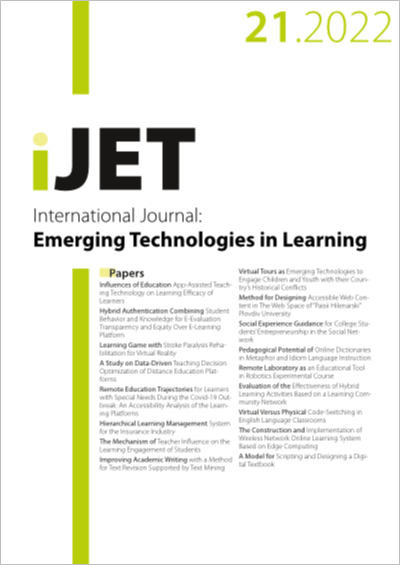Remote Education Trajectories for Learners with Special Needs During the Covid-19 Outbreak
An Accessibility Analysis of the Learning Platforms
DOI:
https://doi.org/10.3991/ijet.v17i21.32401Keywords:
accessibility, remote learning applications, emergency education, inclusive education, COVID-19Abstract
In order to stop the COVID-19 virus spreading, most universities replaced traditional in-class education with remote teaching and learning. The whole situation was stressful for all, particularly for the students with special needs. It seems that these students were literally abandoned, and many differently abled students completely missed out on their education. Learning results of those who were enabled remote learning significantly decreased, which additionally undermined their already present low self-esteem. To resolve the dilemma whether the essential groundwork for inclusiveness exists, this paper examines the accessibility of learning management systems, audio and video teleconferencing applications, and massive open online courses. Four impairments: motor, vision, hearing and cognitive were carefully explored in line with WCAG 2.1 recommendations. The current state of the synergy between the components was assessed carefully and thoroughly. Based on the research findings, recommendations towards making online learning more accessible to students with special needs are proposed, aiming to enable broad education to everyone, with no discrimination on the basis of disability.
Downloads
Published
How to Cite
Issue
Section
License
Copyright (c) 2022 Katerina Zdravkova, Fisnik Dalipi, Venera Krasniqi

This work is licensed under a Creative Commons Attribution 4.0 International License.



